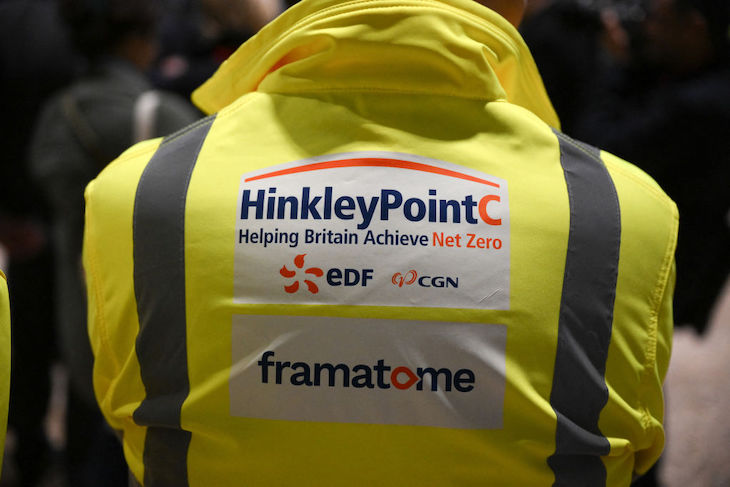Should we be bothered that Hinckley C nuclear power station has run even further over budget (the latest estimate is £35 billion, nearly twice that quoted when the project was given the go-ahead in 2016) and that its completion date has been put back yet further, to 2031? After all, the whole point of offering French energy giant EDF a guaranteed ‘strike price’ at the then juicy rate of £92.50 per megawatt-hour (at 2013 prices, rising with inflation) was supposed to be to transfer financial risk to EDF and its financial backers. ‘It is important to say that British consumers won’t pay a penny, with the increased costs met entirely by shareholders,’ EDF’s managing director of the Hinkley project state this morning.
What if EDF threatened to cut its losses and withdraw?
I wouldn’t be so confident. Yet more delays to Hinkley C punch a huge hole in the government’s net zero plans, which include the full decarbonisation of the national grid by 2035 (Labour says it will do it by 2030). By 2028, all but one of the UK’s existing five nuclear power stations are due to close – and the other one, Sizewell B, is due to be gone by 2035. From generating nearly a third of the UK’s power at its peak in 1998 the nuclear industry could be down to virtually nothing by the time Hinckley C eventually opens.
The government simply cannot afford not to have a strong nuclear industry. It has pledged over £200 million to go into the development of small nuclear reactors – the subject of a competition now being conducted – but even if all goes well with those they will not be operational until the mid 2030s.
Without Hinkley, the government (if it sticks with its decarbonisation target) is going to find itself forced to construct a grid based entirely on intermittent wind and solar, plus the very controversial burning of wood pellets and gas power stations with carbon capture and storage attached. The government has put £20 billion into the latter technology but there is little sign yet of when such plants will be operational. They will certainly produce electricity at significantly higher cost that existing gas plants.
That is why I wouldn’t bet anything on taxpayers and consumers avoiding being put on the hook for Hinkley C. What if EDF threatened to cut its losses and withdraw – would the government really leave a half-built nuclear power station on the Somerset coast? I don’t think so.
Just look how the government yielded to the wind lobby last autumn and upped the strike prices available for offshore wind, after receiving no bids in its September auction. No-one should be surprised if, before we get to 2031, EDF goes cap in hand to the government, and the government offers it some kind of deal which transfers risk back onto the taxpayer. There will be uproar, but so long as the government remains bound to its self-imposed target of net zero by 2050 we are going to end up underwriting every low carbon energy project.
This article is free to read
To unlock more articles, subscribe to get 3 months of unlimited access for just $5








Comments
Join the debate for just £1 a month
Be part of the conversation with other Spectator readers by getting your first three months for £3.
UNLOCK ACCESS Just £1 a monthAlready a subscriber? Log in